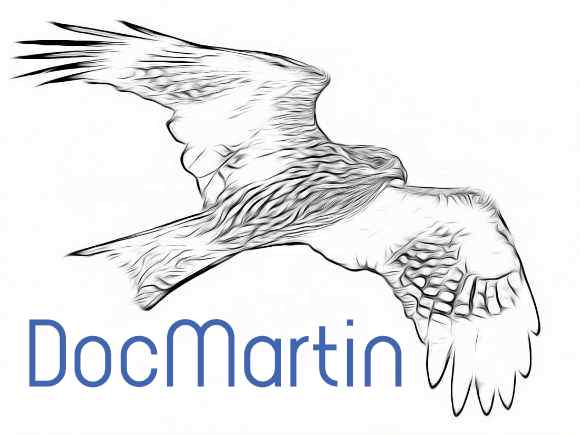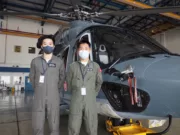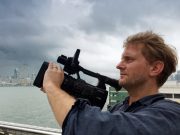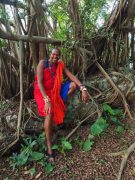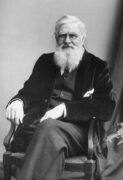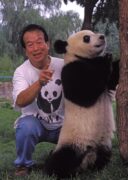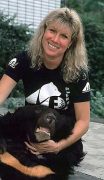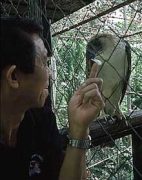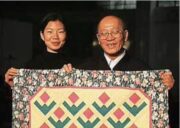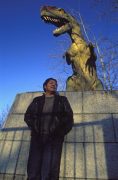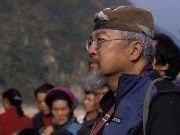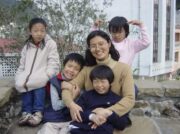A mysterious illness was striking the medical staff down one by one. How could they fight back?
On 4 March 2003, the 26-year old man who would become known as “the index patient” walked into the emergency room of the Prince of Wales Hospital in Hong Kong. He complained of fever and a persistent cough, which had lasted several days. Diagnosed as suffering from pneumonia, he was admitted to Ward 8A. As he was an otherwise healthy young adult, it was expected that antibiotics would help cure him within two or three days.
The Prince of Wales is a teaching hospital, and medical students occasionally visited the patient to listen through stethoscopes to his hoarse breathing. Ward 8A was also used for annual medical exams conducted by students who diagnosed patients’ maladies under supervision.
Six days later, nurses reported that 17 of the 40 patients in 8A had high temperatures. Cardiologist Eugene Wu was among the doctors whose rounds included 8A, and who were called to a special meeting by Professor Joseph Sung, head of the department of medicine and therapeutics. After asking around, Sung and others had learned that some of the medical staff and students working in 8A had suffered bouts of fever. Influenza seemed a potential culprit.
That night, Dr Wu suffered from chills; he slept with extra blankets. He realised he had become one of the affected people. In the morning, he felt fine, and went to work. But an infectious diseases specialist colleague told him he should quarantine himself at home. Wu heeded the advice.
The number of people with fevers snowballed, and Prof Sung isolated 8A, and established an observation ward for anyone who might be affected. The disease was baffling. It even took several days for Sung to pinpoint the 26-year-old as the source – the index patient. Tests for influenza proved negative. Initial chest X-rays revealed no indication of pneumonia. Even so, knowing of nothing else that might help, Sung gave the patients anti-flu drugs and antibiotics.
These drugs would prove useless. The Prince of Wales was about to experience the impact of a disease that can strike like a tornado – touching down with little or no warning, horrifying and life-threatening for those caught up in its vortex. The world would soon know it as SARS – Severe Acute Respiratory Syndrome.
This article first appeared in the Chinese edition of Reader’s Digest, June 2003. Reader’s Digest holds copyright in the text
Outbreak!
On 11 March, Dr Yannie Soo, a 26-year old medical officer who had been working on the floor above, was called into the observation ward to help inspect X-rays. She found beds filled with her friends – doctors and nurses she worked with every day. Some were obviously very worried. The worst affected were breathless, feverish and too weak to walk. Though wearing a face mask and gloves to guard against infection, Soo had to be quick, as the hospital wanted to ensure it had a strong “clean” team of medical staff who hadn’t been exposed to the disease.
Soo was in the ward for less than ten minutes.
An unknown virus; panic grips Guangdong
A month earlier, the Hong Kong media reported on an unknown virus that was sweeping through neighbouring Guangdong province, China. “Panic grips Guangdong as mystery pneumonia-like virus kills 6,” ran a newspaper headline on 11 February. Fearful residents of cities in the province had cleared shelves of antibiotics and flu medicine.
Guangdong officials announced then that there had been 305 cases of the infection, with five deaths. On 21 February, Dr Liu Jianlun, a nephrology specialist at one of Guangzhou’s premier hospitals, arrived in Hong Kong for a relative’s wedding. The next day, he went to the Kwong Wah Hospital and told staff he was suffering from a very virulent disease. Liu died a few days later.
Liu had stayed overnight in a hotel, and here – perhaps as he coughed and sneezed in a lift and lift lobby – he infected seven people with the mystery virus, and set off a chain of events that resulted in a spate of outbreaks around the world. As well as tourists who carried the disease to their homes in Singapore and Canada, the seven included the Prince of Wales’s index-patient, and a businessman en route to Vietnam.
Arriving in Hanoi, the businessman suffered from fever, and went to a hospital. Soon, many hospital staff fell ill. One of the first doctors to see the businessman was Italian Dr Carlo Urbani, a World Health Organization expert on communicable diseases who was then based in Hanoi. Realising this highly contagious disease was unusual, Urbani notified the WHO headquarters in Geneva. Urbani died of the disease on 29 March.
The WHO had heard of the mystery virus in Guangdong. Now, though no connection was yet established, it seemed this could be the same as the one causing the disease Urbani described, as well as the onset of fevers and pneumonia in the Prince of Wales Hospital. On 12 March the WHO issued a global alert about the disease and three days later, a travel advisory.
In response to the global threat, the US Centers for Disease Control and Prevention also activated its Emergency Operation Center.
Hong Kong, however, seemed reluctant to take emergency action, although by 16 March, 36 Prince of Wales staff were admitted to hospital due to respiratory infections, of whom 29 had pneumonia symptoms caused by an unknown agent. The Secretary for Health, Welfare and Food, Dr Yeoh Eng-kiong, said, “As far as we are concerned, Hong Kong is still a safe place to visit.”
Soo couldn’t stand by while her friends suffered
In the Prince of Wales, Prof Joseph Sung had divided doctors into two teams: “Clean” and “Exposed.” Yannie Soo was assigned to the Clean Team, working on regular patients. She felt fortunate – and yet knew she had friends who were bedridden, and needed help.
From Exposed Team members, Soo learned the disease could develop with terrifying speed. Because they had already been exposed, Team members were perhaps incubating the disease. Sure enough, some began falling ill. Members of the dwindling team tried to assure their colleagues they were doing fine. But Soo could read in their eyes how worried, tired and desperate they were.
Soo decided she couldn’t stand by while her friends suffered. And to help, she would have to join the Exposed Team, and work directly with patients afflicted by the virus, even though there was a chance she too could be stricken, and there was no known cure. A Christian, she prayed to God to give her the courage to help.
Dr Wong Kong-chiu, who was responsible for manpower, decided to hold a draw for a new Exposed Team member on Monday 17 March. But at a meeting the preceding Saturday, he said the team was short-staffed for the ward rounds the next morning. “Okay, I’ll do it,” said Soo.
Wong looked at her in surprise. “Are you sure you want to? We’ll have the draw in a couple of days, and there’s a chance you’ll escape,” he said. Three times, Wong asked if Soo was sure; three times, she said yes.
Soo almost sighed with relief on her first foray into an isolated ward. The eight patients there had been examined and declared free of the disease. But she was extremely nervous the next time, when she was called into 8A.
Like all staff working on the two floors of the Prince of Wales that were now dedicated to SARS, Soo had a face mask on before entering the hospital, then changed clothes, disinfected her hands, pulled on gloves, washed these with disinfectant, and donned a cap and gown. She rode the lift to the isolated zone, to work the night shift.
Soo’s pager alerted her to an emergency: a patient in 8A had extreme breathing problems. She hurried along the corridor, and used a foot to push through the double doors. The sight that met her eyes was shocking. Most of the 32 patients in the ward needed oxygen, supplied by tubes into their noses or masks. Because they couldn’t breathe lying flat, several were sitting bolt upright. There were young doctors and nurses who looked like 70-year olds with heart failure. Exhausted, yet unable to sleep, they despondently watched Soo and the nursing staff move around the ward. To Soo, it was like a scene from “Outbreak,” the movie in which a scientist played by Dustin Hoffman confronts an Ebola-like virus in an American town.
The emergency patient’s blood oxygen had dropped to dangerous levels. Soo hesitated to touch him for fear of the disease, yet she knew she must if she was going to help. Arm fully outstretched, she put her stethoscope to his back. She then gave him medicine, and checked back a few hours later, finding his condition stable.
“Am I going to die?”
These were nerve-wracking days in the Prince of Wales. Prof Sung was trying a new, experimental treatment regime involving mega-doses of steroids and an anti-viral drug. It was a gamble, a last-ditch effort with nothing left in his medicine cabinet that might stem the SARS’s advance. There were encouraging signs, yet SARS was still in command, still very alarming.
“Am I going to die?” an old man asked Soo, his eyes imploring her to help.
She found it hard to reassure him that everything would be all right; patients in the wards could see that each night one or two people were taken away to intensive care, and not brought back. The man was breathless.
“You have an infection in your lungs. We’re going to give you a drug to reduce the inflammation, but it needs time to work,” Soo told him. “Don’t worry, stay still for a while, and we’ll also give you oxygen.” She sat with him about 10 minutes, till his anxiety passed and his breathing steadied.
Soo decided to become a doctor after spending time in hospitals when two of her aunts had cancer, and discovering that patients weren’t getting all the reassurance and answers to questions they needed. As well as employing medical knowledge, she wanted to use her compassion, care and counselling skills. Now, overcoming her fear of contact, she employed these qualities to help patients through these dark times.
Soo figured that comforting people this way was perhaps more important than the medicine. Although she seemed confident in the wards, Soo was inwardly worried about the outcome, worried many patients were indeed waiting to die. She cried once she reached the corridor, went to her office till she was composed again, and then continued her rounds.
For the first time, Wu felt quite scared
Cardiologist Dr Wu had stayed home for a couple of days. But he again suffered from fever, with his temperature soaring to 40C, and came back to the hospital. His fever dropped, his X-ray was clear, and he went home, where another bout of fever sent him back to the hospital, with nightmarish days ahead.
Tests of Wu’s blood revealed he had fewer white cells than normal, and his clotting ability was reduced. On Friday 14 March, Sung checked him, and talked to him as if he were a family member. “We might use a combination of ribavirin and steroids to treat you,” he said. “But your X-ray is still clear – so I’d like a CT scan first.”
For the first time, Wu felt quite scared. This isn’t an illness I know anything about, he thought. It isn’t something my boss has ever seen, and I can see fear in his eyes.
The CT scan revealed a large patch of consolidation that was barely visible on the X-ray. Sung decided Wu should be given mega-doses of ribavirin and steroids, administered intravenously.
Ribavirin seemed sensible to Wu: it’s an anti-viral drug that can disrupt the replication process, resulting in “genetic meltdown.” But steroids repress the body’s immune system. Even as Wu watched the first dose of steroids entering his veins, he wondered: is this going to make my condition worse? If the virus was causing the lung damage, repressing his immune system was surely dangerous. But if the virus had somehow fooled his immune system into believing his lungs were the enemy, steroids would help.
Sung had bet heavily on the steroids, and after the second dose, Wu’s fever dissipated. He was moved to a new ward. Visitors were banned: a mixed blessing, as his wife wouldn’t be risking infection to visit, but he would miss seeing her.
Three days later, Wu’s fever was back with a vengeance. He was really worried. He’d seemed to be past the worst, and SARS had struck another blow. He needed a higher oxygen flow, and knew this was just a step away from requiring intensive care.
For the next few days, Wu stayed in bed. He told himself he had already crossed several hurdles, and by now he could see people in the ward who were getting better. At last, Wu found he was okay without the oxygen tube; he was on the mend.
Best wishes for victory in the battle against SARS
For Yannie Soo, the success of the ribavirin-steroids treatment brought sunshine to the wards. The leaden atmosphere lifted, as recovering patients began to talk and smile.
She was greatly encouraged by cards and flowers that well-wishers sent to the hospital, and which were kept in the hospital foyer. She hadn’t realised so many people were behind the medical staff battling SARS. Often, Soo stopped to check messages as she was leaving. “I appreciate the dedication and the tender loving care of the medical professionals,” wrote one ex-patient. “Best wishes for those who are suffering and for their early recovery, and for victory in the battle against SARS.”
Other doctors had followed her lead in joining the Exposed Team. Each evening, they met for dinner, discussing their experiences, media reports and ways they could make life easier for the patients. They chipped in to buy VCD players to put in the wards, and phoned patients’ family members to reassure them.
Soo asked patients what they wanted from convenience stores, and reappeared with bags bulging with newspapers, snacks and soft drinks. Eugene Wu gladly accepted a newspaper and chocolate she offered him.
During the afternoon tea break on 24 March, a dozen members of the Clean and Exposed teams celebrated Soo’s birthday. They had a cake, with candles that weren’t lit as it was too risky for Soo to blow them out and just possibly spread the virus. Soo cut the cake. Masks off for a few minutes, they ate, talked and joked, before returning to the wards. It was Soo’s most memorable birthday.
Five days later, Soo attended a press conference, as nine doctors and nurses who had been treated for SARS were discharged. The nine stood and gave victory signs as journalists and medical staff cheered. Soo had tears in her eyes; it was such a relief to see some friends recovering and going home. It was time to give Hong Kong citizens a positive message: this disease is curable.
Soo’s friends were very supportive, with some coming to her apartment, bringing chocolate and flowers to cheer her up. Each evening, she phoned her parents. She dared not relate what was happening, but instead told them she was on the Clean Team. “Don’t worry,” she’d say. “Because of all the precautions we’re taking I’m probably safer inside the hospital than outside.” Even so, with daily news reports of deaths and extra cases, her anxious mother cried over the phone.
I’m very proud of you
Soo’s mother eventually learnt that her daughter was treating infected patients from a newspaper. She phoned, but instead of being panicked, she told Soo, “I’m very proud of you. I never thought my daughter could do such a courageous thing.”
When Soo first joined the Exposed Team, she decided it was best if she didn’t meet her parents or friends as frequently as before. Even though she was often checked for signs of the virus, she worried she might unwittingly infect them. But as the weeks passed, she relaxed and started seeing them more often, not letting SARS wholly disrupt her life.
Eugene Wu’s life, however, was completely disrupted. He experienced the unpredictability of SARS even after he was through the worst of it. Once he didn’t need an oxygen tube any longer, he found he was 14 pounds lighter. Like others who were recovering, he had lost fitness too.
Wu accepted the chance to leave the hospital for a rehabilitation facility – finding it incredible he needed to recuperate there, when he normally thought of it as a place for sick and old people. Here, he felt much happier, and was delighted when he was at last discharged. He didn’t head straight
home, in case his wife might catch SARS from him, but quarantined himself in an apartment.
Soon after the self-quarantine was over, Wu went hiking with his wife. Wanting to see how far he could go, he decided to climb a hill. He managed it, although he needed to stop often to catch his breath. But the next day he found it hard to climb even two flights of stairs. An X-ray showed more consolidation in his lungs. He was still taking oral steroids and, fearful the lung damage might become permanent, his doctor gave him a higher dosage.
Happily, the increased steroids evidently helped. X-rays showed his lungs were improving; they felt better too. “I just had lunch with some of the other doctors who have been discharged, and most are getting better, which is good news,” he said. “I think I’ll be back at work in another two weeks.”
Editor’s Note: By 20 April, Eugene Wu was on the mend; he could climb three or four flights of stairs. Laid low for six weeks, he itched to get back to work, but Joseph Sung wanted him to wait till his lungs were completely recovered. Yannie Soo had viewed a now-cancelled medical exam in April as the most important thing in her life, yet with SARS she realised her chief goal was helping patients. With more SARS patients being admitted than discharged, Hong Kong has opened SARS wards in four other hospitals in addition to Prince of Wales.
Spread of SARS
16 November 2002 – the first SARS case recorded in China’s Guangdong province.
Early March 2003 – SARS cases spread to Hong Kong, Canada, Singapore and Vietnam.
26 March 2003 – Up to 28 February, there were 792 cases and 31 deaths in Guangdong.
11 April 2003 – 2890 cases and 116 deaths reported, in which China with 1309, Hong Kong with 1059 and Singapore with 133.
What do we know about SARS?
SARS is commonly believed to be caused by a previously unknown coronavirus. There is also suspicion that the agent might be originated in animals.
Within two to ten days of first infection, sufferers experience a fever. There may also be a headache, or even aches throughout the body, perhaps also a cough and diarrhea.
Some doctors have used antiviral drugs such as ribavirin and steroids to treat patients. Diagnosing SARS remains difficult.
Guarding against the disease
— Wearing a surgical mask can help protect one from contracting the virus.
— Make certain your hands are clean before you eat, touch your eyes or rub your nose.
Top People
Helicopter crews brave mighty winds and waves to rescue seamen during South China Sea typhoons
On the morning of 2 July 2022, as Hong Kong was lashed by gales and rainstorms…
James Reynolds typhoonhunter and volcano videographer
James Reynolds is a pioneer of travelling to film typhoons, and has added volcanoes to his…
Maasai safari guide Jackson Looseyia
Kenyan born Maasai safari guide, one of the presenters of the BBC’s Big Cat Live series.
A Man for All Sequences Frederick Sanger
Frederick Sanger made pivotal contributions to studying the chemistry of life, primarily by finding how molecules…
Blue light at last wins Nobel for LED titans
Isamu Akasaki, Hiroshi Amano and Shuji Nakamura received a Nobel Prize for seminal roles in the…
Genius of the Jungles: Alfred Russel Wallace
Though best known as co-discover of evolution, Wallace was an astonishing man: an explorer, self-taught naturalist,…
The butterfly and the remarkable Professor Hofstadter
Hofstadter’s butterfly, a remarkable spectrum of electron energy levels, was first described in 1976 by Douglas…
James Hansen Godfather of Climate Change retires yet will be very busy
Instead of aiming for a leisurely life after work, Hansen plans to better focus his time…
Pan Wenshi: Scientist Who Fights for the Pandas
When Pan learned how close giant pandas were to extinction, he knew he had to help…
Jill Robinson helping bears
First Jill Robinson was shocked, then she set out to stop the suffering The Great Bear…
Jessie Yu – Hong Kong Single Parents Assoc founder
The best way to get ahead, says this tireless Hong Kong philanthropist, is to help yourself.…
Keeper of the Kings: Captive breeding Philippine Eagles
Domingo Tadena: Captive breeding Philippine eagles
Dr Yang Lihe helping former leprosy patients
Yang knew only too well that the suffering of leprosy patients doesn’t end when the disease…
Dinosaur hunter Dong Zhiming
Meet the world’s greatest dinosaur hunter.
Dramatic rescue by brave helicopter crew from roof of blazing Garley Building in Kowloon
A helicopter crew rescues people from the roof of a burning building in Kowloon.
Mountain Dog and rebuilding schools in China
Retired Hong Kong schoolmaster helped get many kids from poor families in China back into the…
Mother Ko’s fight for justice
The more lawmakers ignored her, the more determined she became to seek justice
Allen Lien
In October 2002, boxes of clothes began arriving in Burkina Faso, a country in West Africa,…
Teacher Lin helps kids in Taiwan
From reading and her observations of people, she believed everyone had good in them. These kids…
